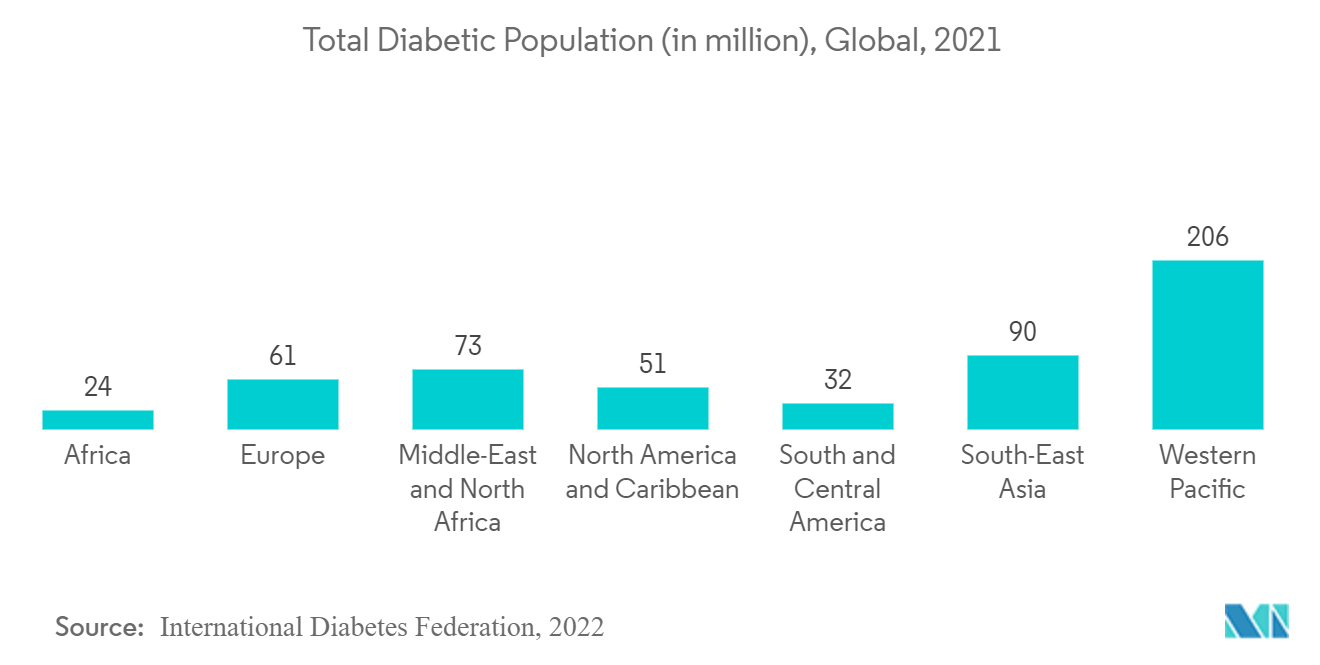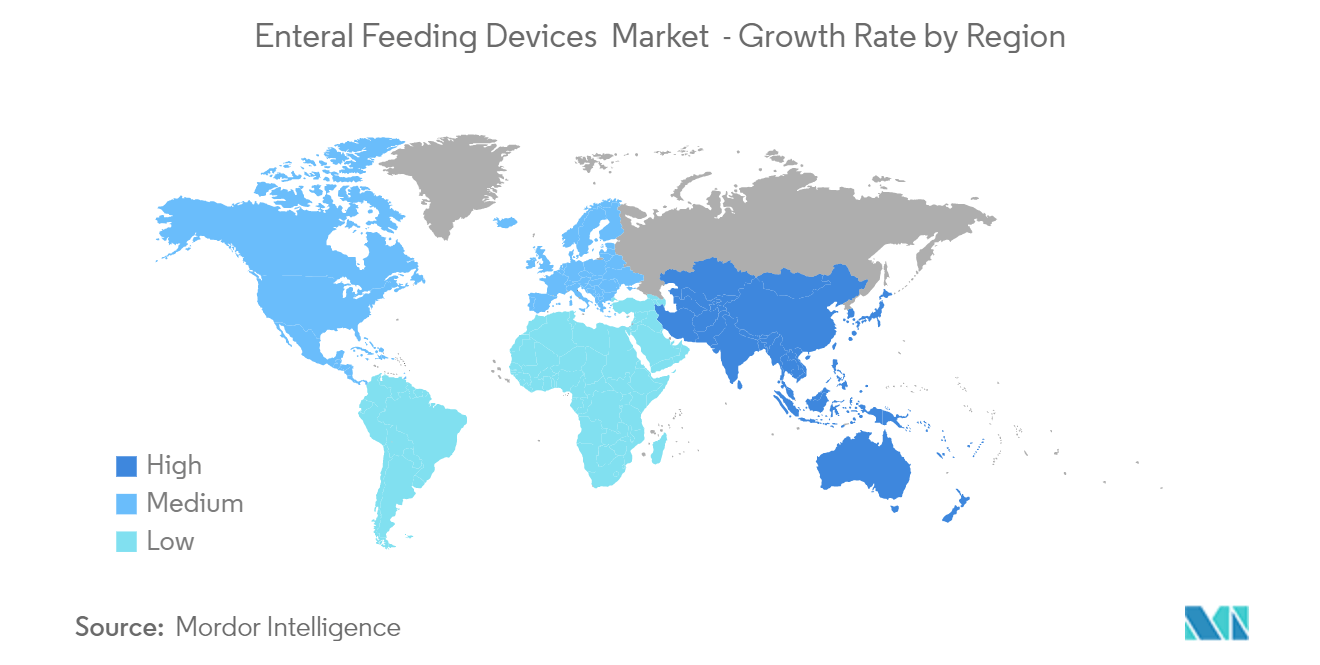Market Trends of Enteral Feeding Devices Industry
Diabetes Segment Is Expected to Witness Significant Growth Over the Forecast Period
Enteral nutrition in people with diabetes has certain specificities that arise from the risk of hyperglycemia, ketoacidosis, hypoglycemia, and a fast shift to catabolism upon starvation. The diabetes segment is expected to witness substantial growth during the forecast period attributed to factors such as the increasing burden of diabetes and the growing implementation of strategic initiatives by market players.
As per a 2021 update by the International Diabetes Federation (IDF), approximately 537 million adults (20-79 years) had diabetes in 2021. The same source also reported that the total number of people living with diabetes is projected to rise to 643 million by 2030 and 783 million by 2045. Enteral nutrition plays an important role in reducing the risk of malnutrition in diabetic patients by providing the necessary macro and micronutrients, such as energy, protein, vitamins, and minerals. Thus, the demand for enteral feeding devices will likely increase among the diabetic patient population shortly.
Furthermore, according to an article published by Reviews in Endocrine and Metabolic Disorders in March 2022, the management of patients with diabetes/hyperglycemia is challenging and requires a specific nutritional approach, the purpose of which is to fulfill the nutritional requirements while maintaining optimal glycemic control. This nutritional requirement can be fulfilled by enteral nutrition feeding. Thus, increasing nutritional requirements is expected to increase the demand for enteral feeding devices, thereby driving market growth.
Thus, the factors above, such as the increasing burden of diabetes coupled with increased nutritional requirements, are anticipated to boost the segment's growth throughout the analysis period.

North America Expected to Hold a Significant Growth in the Enteral Feeding Devices Market Over The Forecast Period
The North American region is expected to hold a significant share in the enteral feeding devices market over the forecast period due to factors such as an increase in the burden of chronic diseases and surgical procedures. For instance, as per statistics by the International Diabetes Federation (IDF) Diabetes Atlas, 10th Edition, in 2021, 1 in 7 adults (51 million) are living with diabetes in North America. The number of adults with diabetes is expected to reach 57 million by 2030 and 63 million by 2045 in North America. Patients with diabetes are likely to have a threefold higher risk of being hospitalized. Many consequences of improperly managed diabetes, such as stroke, can necessitate enteral feeding. Likewise, as per the data published by the Canadian Cancer Society, in 2022, it was estimated that around 4,100 Canadians would be diagnosed with stomach cancer. Thus, such statistics indicate that the demand for enteral feeding devices for nutrition management within the country will increase over the coming years, ultimately boosting the market growth.
Moreover, market players are engaged in various strategies contributing to market growth. For instance, in May 2021, QMD reported the addition of Nasogastric Tubes to its Degania Enteral Feeding Product Portfolio. Nasogastric tubes are manufactured from premium materials and designed to comply with ENFit connection standards for improved patient safety. Likewise, in September 2021, Vonco Products' EnteraLoc Flow direct-connect enteral nutritional delivery system received 510 (K) clearance from the United States Food and Drug Administration (USFDA). The system, which features a pouch with a leak-proof seal, Vonco's direct-connect ENFit device, and a tube for food delivery, can deliver nutrition in a hospital or home care setting and can be tailored to meet most dietary requirements.
Thus, the market is expected to witness significant growth over the forecast period due to the above-mentioned factors, such as an increase in the burden of chronic diseases and surgical procedures.


